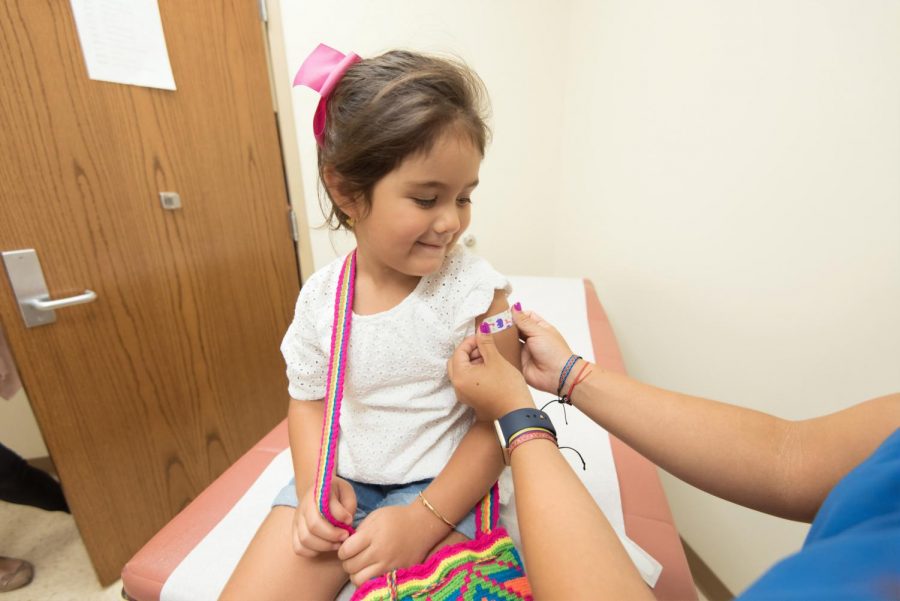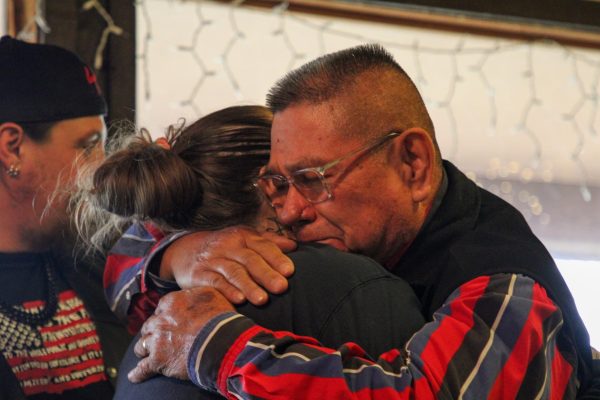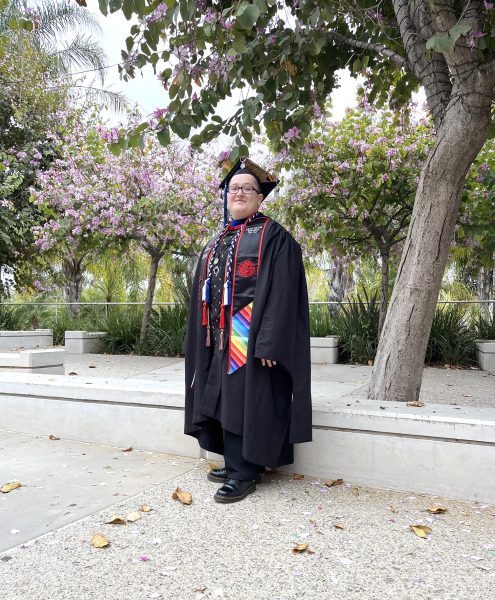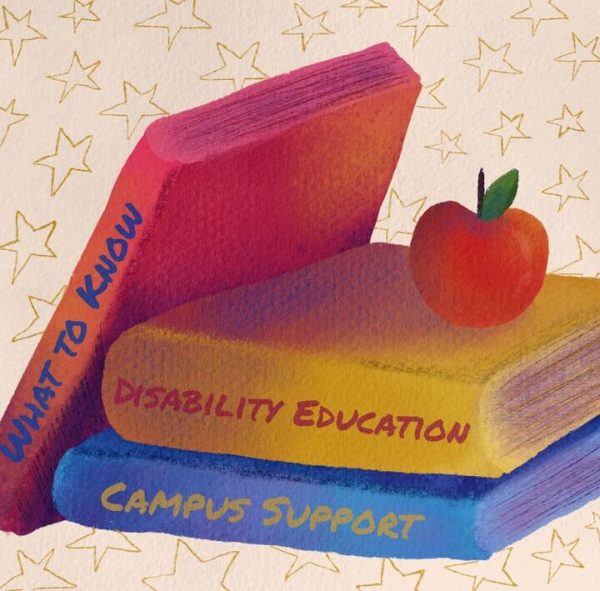Containing the flu is not child’s play
CDC
In this 2017 photo, captured inside a clinical setting, a health care provider was placing a bandage on the injection site of a child, who had just received a seasonal influenza vaccine.
February 15, 2020
Children and classrooms go hand-in-hand, but when places of learning become breeding grounds for contagious germs and airborne illnesses, one may want to think twice before hand-to-hand exposure.
With flu season at its peak, young children find themselves at a heightened risk of developing complications from the flu. Many people in child care try to protect the kids from the flu, but find themselves in need of protection as well. Child care professionals have to make sure they can safely navigate the flu season to protect themselves, and the children they care for, from illness.
Chanelle Camello is currently a part-time preschool teacher and CSUN student studying public health. She has been a preschool teacher for a little over a year.
Preschoolers are so young, it’s hard to gauge whether or not they fully grasp why covering their coughs and sneezes are necessary.
“It’s a hit or miss depending on their developmental skills and if they’re understanding that when they cough it’s going to spread,” Camello said. “Some of them do, I can think of a handful that do and some that I have to give a reminder to. Sometimes it’s easier to teach them to cough into their shirts rather than cough out into the open, because I would prefer anything else.”
Hillary Lomas is a camp counselor during the school year, working with first graders after school helping them with homework, projects, arts and crafts, and games. She’s been a camp counselor for three years.
Lomas said it can be difficult to teach children to be mindful of germs, because she finds that they don’t want to wash their hands or blow their nose when it’s runny. She said being consistent with children about washing hands and covering their mouth when coughing or sneezing is an effective route.
“Some parents don’t take the time to teach their children these small steps to prevent others from getting sick,” Lomas said. “The parents that do explain the reasons why to their children make it easier for everyone else because they are conscious and it becomes a good habit.
When parents don’t teach, that is when camp counselors and teachers are needed to remind them and explain that germs shouldn’t spread and it isn’t proper to cough in other people’s space.”
Camello said she often sends kids home when they arrive sick, especially during flu season.
“If they go to school when they’re sick, yes they’ll be at school, but they won’t be performing their best because they’ll be coughing or not feeling well,” Camello said. “And there’s the risk of getting their teachers sick and then having their teachers miss work or getting other kids sick and just spreading germs. In general, kids are very germy so it’s kind of often that it happens, but with the flu it has to be taken much more seriously.”
The flu is more dangerous than the common cold for children, causing more hospitalizations among young children than any other vaccine-preventable disease, according to the Centers for Disease Control and Prevention.
Lomas believes sickness can spread faster in a classroom setting, as children often don’t wash their hands after using the bathroom or cover up their mouth when they cough and sneeze. The areas around them need to be cleaned constantly in order to prevent the spread of germs.
Despite attempts at cleanliness, Lomas said the children she works with get her sick quite often.
“I get sick three to five times a year, I usually have colds,” Lomas said. “I get the flu maybe once or twice depending on how fast it spreads.”
Although Camello has never had the flu, she tries to boost her immune health as a precautionary measure.
“Combating the flu season for me is trying to keep up my immune system,” Camello said. “I try to go with a more homeopathic or a more holistic approach, I don’t really take over-the-counter medications. I take elderberry syrup — about a teaspoon before bed — for immunity support. Some people tend to change their diet during this time, eat bone broth or things that will aid their immune health. That’s so important for teachers, because we’re surrounded by so many germs.”
There are many precautions a household or institution can take to stay more hygenic, one way to keep the flu from spreading is through air purification.
“We have diffusers in each classroom and in the lobby that we use,” Camello said. “It’s like an antibacterial for the air.”
Along with washing her hands with soap and water, disinfectant wipes are an essential tool Lomas uses to ensure cleanliness. She always wipes down tables and chairs after activities at the end of the day to cut down on the spread of germs.
When it comes to prevention, Camello said she believes vaccinations are in the best interest of the most vulnerable.
“I think it’s a big problem that we have anti-vaxxers,” Camello said. “As a parent you’re entitled to take care of your child the way you want to, but when you’re compromising or putting other kids at risk who might have certain diseases … (they) won’t have a built up defense system from people who are anti-vaxxers.”
Although there is some debate on vaccinations and whether or not they’re harmful, she said she’s a supporter of vaccinations.
“I don’t think there’s enough scientific evidence for people to not get vaccinations,” Camello said. “I’m vaccinated, my whole family is vaccinated, and we’ve never had a problem.”
Camello finds it funny that people worry more about catching the coronavirus than taking precautions to prevent the flu. The coronavirus is rare, she said, but social media and word of mouth have turned it into a bigger thing despite the fact that more people are susceptible to the flu every year.
Some people question the success of the flu shot and as a result, opt out of getting one. This is a common occurrence among many that share this belief. However, the CDC says those that get vaccinated are half as likely to get sick compared to the ones that don’t.
“I personally do not get the flu shot,” Lomas said. “I never got it growing up. I never really got the flu until I started working with kids. I don’t believe that it is effective. This year I have learned that many children and adults that have gotten the flu shot have gotten sick.”
The spread of misinformation is a major reason why people avoid getting the flu shot. And because people misjudge the science of the shot, they overlook the fact that they could have had the flu virus inside of them prior to the shot or shortly after and attribute their symptoms to the flu shot itself. It takes up to two weeks for antibodies to develop within the body following the vaccination.
“People get the flu shot and then they automatically get sick, but they don’t realize that there’s a two week period after the flu shot where you can catch the virus,” Camello said. “And because your flu shot doesn’t get activated until after that window of time, some people blame the flu shot for getting them sick.”










